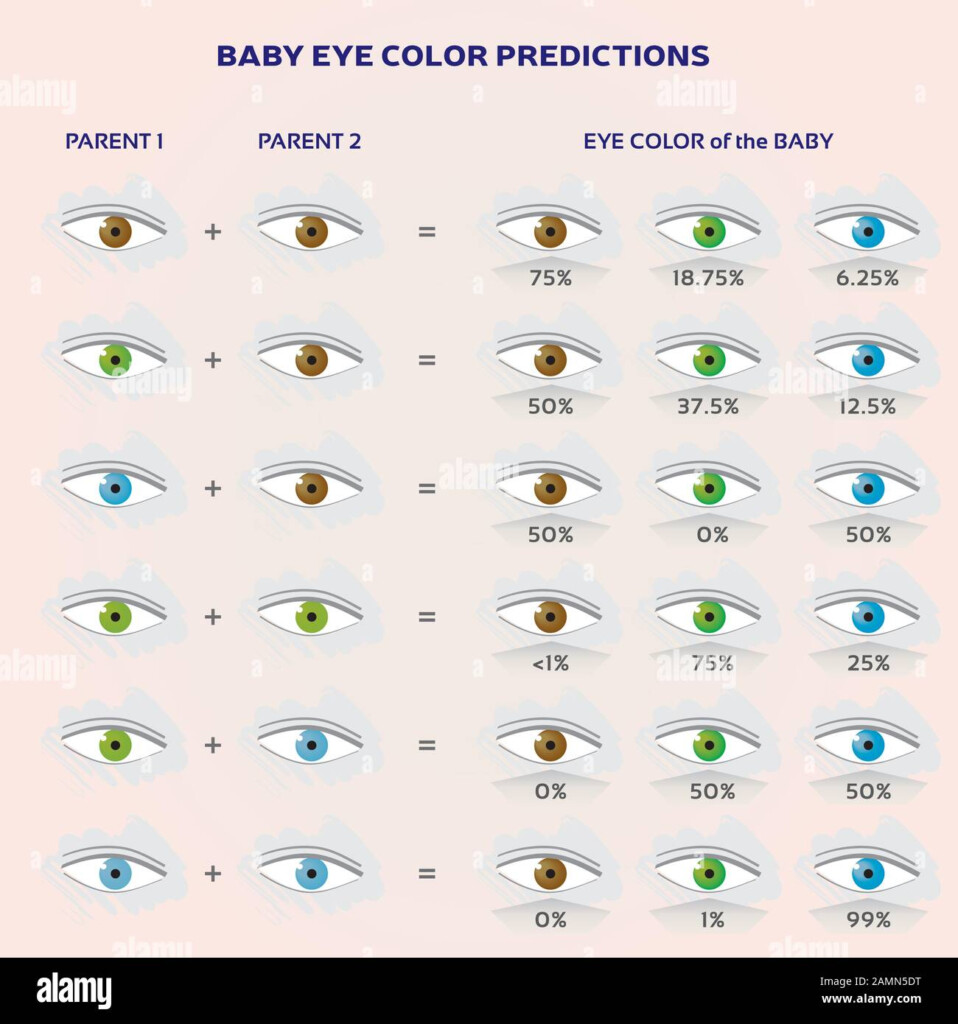Have you ever wondered why some babies are born with blue eyes while others have brown or green eyes? The answer lies in genetics. Eye color is determined by the amount and distribution of melanin in the iris of the eye. Melanin is a pigment that gives color to our skin, hair, and eyes.
At birth, most babies have blue or gray eyes because their melanin production hasn’t fully developed yet. As they grow older, their eye color may change as more melanin is produced. The final eye color is usually determined by around six months of age, but it can continue to change up to three years old.
Eye Color Baby Chart
Understanding the Eye Color Baby Chart
The eye color baby chart is a tool that can help parents predict their baby’s eye color based on the eye colors of the parents and grandparents. This chart takes into account the dominant and recessive genes for eye color, which can be passed down from generation to generation.
For example, if both parents have brown eyes, it’s likely that their baby will also have brown eyes. However, if one parent has blue eyes and the other has brown eyes, there’s a possibility that their baby’s eye color could be a mix of the two, such as hazel or green.
Factors That Can Influence Eye Color
While genetics play a significant role in determining eye color, there are other factors that can influence the final outcome. Environmental factors, such as exposure to sunlight and hormones, can affect the amount of melanin produced in the iris, leading to changes in eye color over time.
Additionally, certain medical conditions and medications can also impact eye color. It’s essential to consult with a healthcare provider if you notice any sudden changes in your baby’s eye color or if you have concerns about their eye health.
